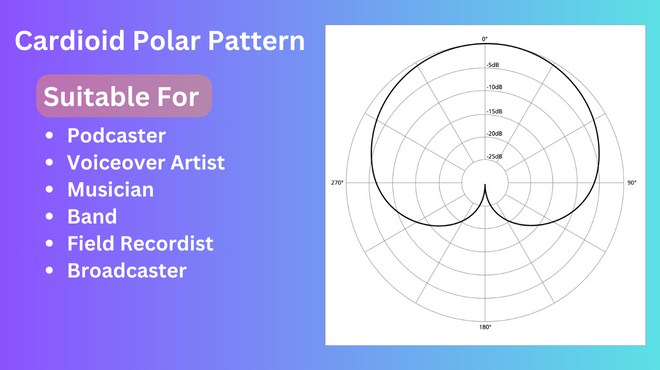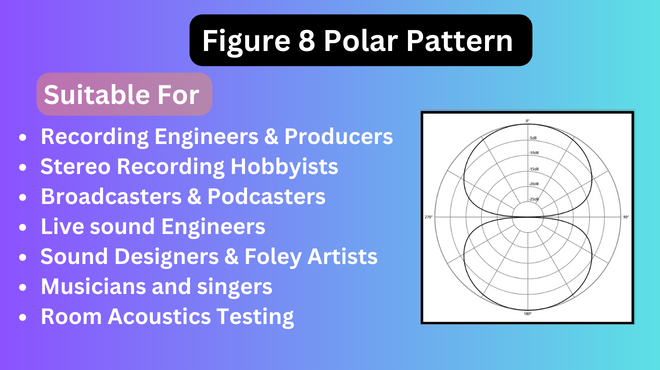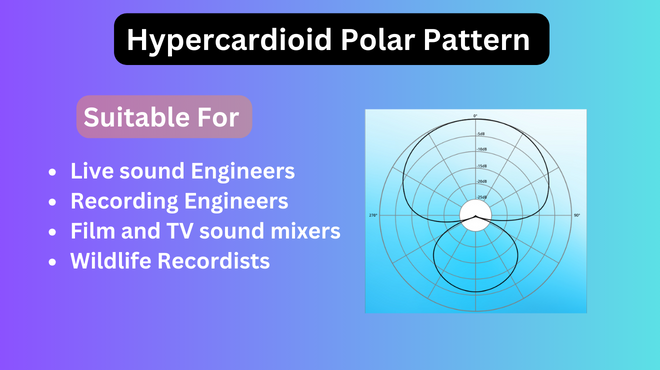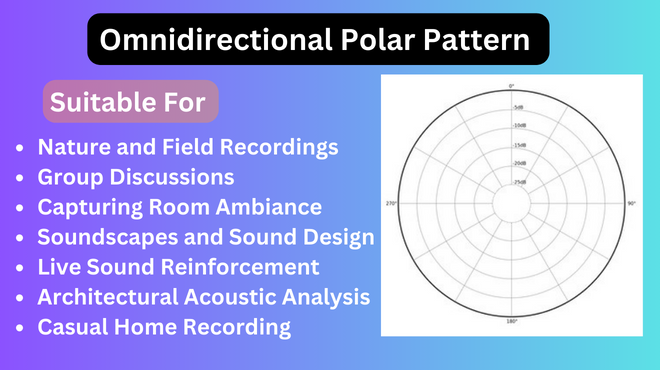Cardioid polar patterns are the inventive minds of audio engineers and inventors are to thank for the development of the cardioid polar pattern, which is frequently recognized as a game-changer in the field of audio technology. Although there isn’t one person to credit as the “godfather” of this polar pattern, many people worked together over many years to shape it.
The Development of Directionality:
The cardioid polar pattern’s underlying concept of directionality in microphones started to take shape in the 1920s and 1930s. To achieve directional sound capture, engineers and scientists were experimenting with various microphone designs. They wanted to create a pattern that would give the sound source priority while reducing background noise and off-axis sound interference.
Milestones in the Journey:
While numerous trailblazing individuals helped directional microphones advance, no one person can be given the credit for being the sole creator of the cardioid polar pattern. However, significant turning points in the growth of this technology include:
Harry F. Olson (1930s): An American engineer, Olson experimented with various directional patterns and made substantial advances in microphone design at this time.
Georg Neumann (1940s): The CMV 3 was a selectable directional microphone that offered cardioid as one of its directional patterns. Neumann is a well-known German microphone manufacturer.
During World War II, American engineers Leslie Howell and Frederick Vinton Hunt focused on enhancing microphones for military uses, which helped directional microphones progress.
In the 1950s, American engineer Alfred Thuras made advancements in directional microphone technology that were later protected by patents.
What is a Cardioid Polar Pattern?
The cardioid polar pattern is a microphone pickup pattern that focuses on sound from the front while rejecting noise from the sides and back. It is distinguished by its heart-shaped sensitivity pattern.
Why should you think about using a cardioid polar pattern?
You should choose it due to the following benefits in your life:
- Noise Rejection – Enjoy Pristine Sound:
- Say goodbye to distracting background noise and feedback, ensuring your recordings and live performances are crystal-clear and professional.
- Focused Sound Capture – Precision Recording:
- Capture your desired source with laser-like precision while minimizing unwanted interference, resulting in top-notch audio quality.
- Versatility – Adapt to Any Situation:
- From vocals and instruments to podcasts and live events, your Cardioid microphone effortlessly adapts to diverse recording environments, offering superb sound consistency.
- Reduced Feedback – Smooth Performances:
- Perform confidently without worrying about ear-piercing feedback. Your Cardioid microphone keeps your live events smooth and hassle-free.
- Controlled Recording – Craft Professional Audio:
- Take charge of your recordings, isolating specific sounds with ease. Your studio sessions are marked by precision and excellence.
- Background Noise Isolation – Cleaner Recordings:
- Even in less-than-ideal settings, your Cardioid microphone isolates your primary source, ensuring cleaner, interference-free audio recordings.
- Ease of Use – Hassle-Free Setup:
- Whether you’re a beginner or a pro, your Cardioid microphone’s user-friendly design and directional nature simplify setup, ensuring hassle-free recording sessions.
- Cost-Effective – Quality Within Reach:
- Access high-quality audio recordings without breaking the bank. Cardioid microphones come in various price ranges, making excellence affordable for all.
How to Choose the Best Cardioid Polar Pattern Type for Your Work?
The cardioid polar pattern is the gold standard in audio recording because it can catch sound from the front while rejecting noise from the sides. There are various sorts of cardioid microphones to take into account, though. Your audio recording experience can be much improved by being aware of these variables and knowing how to select the ideal one for your particular requirements.
1. Standard Cardioid Polar Pattern:
This is the most common and widely recognized among cardioid microphones. It is characterized by a heart-shaped pickup pattern that emphasizes sound from the front while significantly reducing sensitivity to sound from the sides and rear. This type is versatile and can handle a wide range of applications, making it an excellent choice for various recording situations, including vocals, instruments, and podcasting.
To Whom Standard Cardioid Polar Pattern is Best Suitable?
Podcasters and Voiceover Artists: For podcasters and voiceover actors working in controlled studio settings, the traditional polar pattern is ideal. It minimizes ambient noise while accurately capturing the host’s or narrator’s voice.
2. Wide Cardioid Polar Pattern:
The wide cardioid pattern expands on the traditional cardioid pattern by providing a wider pickup angle. As a result, it maintains some degree of directionality while recording sound from a greater region in front of the microphone. Wide cardioid mics are frequently chosen when recording group performances or when you need to focus on the main source while collecting more background noise. They establish a compromise between the omnidirectional pattern’s openness and the typical cardioid’s focus.
To Whom Wide Cardioid Polar Pattern is Best Suitable?
Musicians & Bands: The wide cardioid rhythm might be useful for musicians who are recording in a studio or performing live on stage. Since it can capture a larger area, it is perfect for recording ensemble performances or musical instruments.
3. Half Cardioid Polar Pattern
A special version that mimics half of the typical cardioid pattern is the half cardioid polar pattern. It has an incredibly precise rejection of noise from the sides and back while recording sound predominantly from the front. while you need to isolate a sound source in a difficult acoustic setting or while recording in an area with a lot of background noise, this type is useful. Half cardioid microphones are frequently helpful in these circumstances for musicians and broadcasters.
To Whom Half Cardioid Polar Pattern is Best Suitable?
Broadcasters and field recordists: The half cardioid pattern may be helpful for field recordists, particularly those who record in difficult acoustic situations. Extreme directionality is provided; the intended sound source is isolated, and off-axis noise is rejected. This pattern can be useful for broadcasters who operate in busy environments
Varieties of Cardioid Polar Pattern Microphones
Certainly! Here are the microphone examples:
- Dynamic Cardioid Microphones: Examples include the Shure SM58 and the Sennheiser e835.
- Condenser Cardioid Microphones: An example is the Neumann U87.
- Shotgun Microphones (Super-cardioid): Examples include the Sennheiser MKH 416 and the Rode NTG3.
- Lavalier Microphones (Lapel Mics): An example is the Shure WL185.
- Headset Microphones: An example is the Shure PGA31
- Boundary Microphones (PZM): An example is the Shure MX393/C.
Conclusion
If you work as a podcaster, voiceover artist, musician or band, field recordist, or broadcaster and are seeking a microphone with focus and clear recording, you should consider this Cardioid polar pattern microphone.
How do I make an existing microphone more directional, like a cardioid or supercardioid?
What microphones make your voice sound deeper?
Does it matter if your mic is upside down?
What is the best microphone for podcasting that can block noises inside the house like kids playing?
What is meant by the pick-up pattern of a microphone?
What are the 4 polar patterns?
What is the best polar pattern for vocals?
What is the difference between cardioid and supercardioid polar patterns?
Imagine a field of sensitivity that is heart-shaped; that is the cardioid pattern. Similar to the spotlight on a stage, it generally picks up front-facing sound while subtly dimmering background noise. Cardioid microphones are capable performers with a wide pickup angle of about 120 degrees. They should be used for live events where a little background noise is acceptable as well as studio recordings of singers, instruments, and podcasts.
Supercardioid Polar Pattern: Picture a narrower beam of light now. The supercardioid pattern focuses the light more narrowly and precisely on the source. It provides roughly 115 degrees of range, similar to a sonic sniper
Directionality: Supercardioid is laser-focused, whereas cardioid is more all-encompassing.
Rear Sensitivity: Supercardioid, in contrast to cardioid, has a soft spot for rear noises.
Side Rejection: Cardioid is excellent at ignoring side noises, whereas supercardioid is more tolerant.
Applications: The cardioid is your flexible all-purpose tool, whereas the supercardioid is your fine-tuned instrument for solitary greatness.
Therefore, the decision between cardioid and supercardioid polar patterns depends on your particular audio experience, including whether you’re looking for variety or surgical precision. In the fascinating realm of sound capture, each one has a certain charm of their own.
What is an example of a cardioid microphone?
What is the best polar pattern?
Think of a cardioid sensitivity pattern as a heart. Cardioid microphones capture sound primarily from the front while softly brushing off noise from the sides and back, much like the all-seeing eyes in the front row of a performance. They are the best at live sound and highly adaptable, making them perfect for recording vocals, instruments, and podcasts.
Omnidirectional: Omnidirectional microphones are the way to go if you want a full 360-degree audio embrace. They are ideal for since they collect sound equally from all directions.
The search for the “best” polar pattern in the world of microphones is similar to looking for the ideal seasoning at a fine dining establishment; it all depends on the dish you’re making. The “best” polar pattern depends on the situation and the goal, hence there is no universally applicable solution.
Think of a cardioid sensitivity pattern as a heart. Cardioid microphones capture sound primarily from the front while softly brushing off noise from the sides and back, much like the all-seeing eyes in the front row of a performance. They are the best at live sound and highly adaptable, making them perfect for recording vocals, instruments, and podcasts.
Omnidirectional: Omnidirectional microphones are the way to go if you want a full 360-degree audio embrace. They are ideal for since they collect sound equally from all directions.




